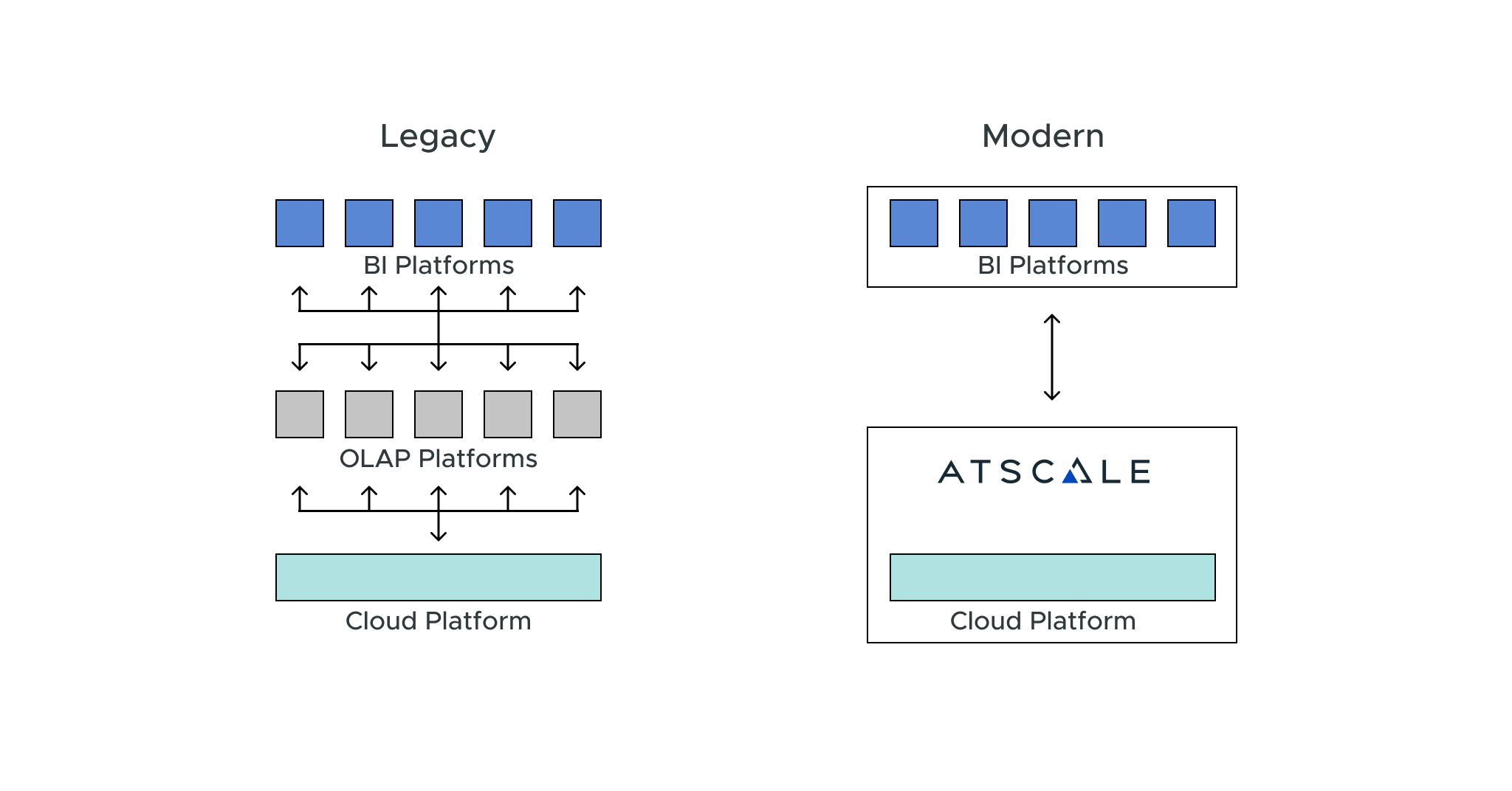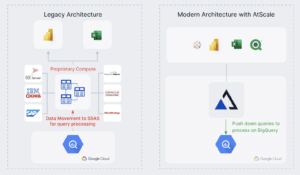
This post is authored in partnership with Naveen Punjabi, Director of Analytics and Data Science Partnerships at Google Cloud. An original version of the post was initially published on the Google Cloud Blog.
A partnership that brings new economics and performance to enterprise Online Analytics Platform Investments (OLAP)
The market for traditional Online Analytical Processing (OLAP) reporting, estimated to be $7.5B, has seen significant BI tool investments by enterprises over the past 20 years. Today, Microsoft Excel and Microsoft Power BI remain the most popular products for BI and reporting. However, there are significant performance and cost concerns for users of these tools.
The hierarchical nature of OLAP models, or cubes, used for multidimensional analysis have become unwieldy and difficult to manage. Clients report that their cubes can sometimes take more than 30 minutes to load/update. Moreover, the growth of “Big Data” has outpaced the scaling capabilities of proprietary, compute infrastructure. Data processing size limits that top out around 4TBs require IT and data engineering to put considerable efforts into creating work-arounds that include moving data and server cluster overprovisioning.
To address these challenges, AtScale and Google have partnered to offer a better solution for modernizing OLAP and related tools, while improving cost efficiency and performance. The joint solution simplifies OLAP cubes by creating a compute layer abstraction that frees enterprises from dated, proprietary server clusters. This allows OLAP workloads to take advantage of the auto-elasticity of cloud native compute, enabling right-sized provisioning, scalability, and cost optimization.
Through the AtScale and Google partnership, leading brands like Tyson Foods, Cardinal Health and Bol.com have experienced significant improvements for their OLAP analytics. Query performance improvements have reduced processing times from tens of minutes to sub-seconds. IT teams have achieved substantial cost savings ranging between $1mm – $2mm per OLAP workload, while seamlessly integrating their OLAP data into today’s modern, embedded data analytics ecosystem.

Figure 1: Comparing Architecture: Traditional OLAP (i.e. Microsoft SSAS) v. AtScale
Modernizing OLAP with AtScale and Google BigQuery
OLAP is a technology used for data analysis and reporting within business intelligence systems. Traditionally, OLAP platforms like Microsoft SQL Server Analysis Service (SSAS), Business Objects, Cognos, and Microstrategy were popular choices due to their fast, “speed of thought” queries and business oriented analytics experiences.
As more organizations migrate to the cloud, traditional OLAP technologies have failed to scale efficiently, particularly with larger data volumes, and have become tough to govern due to proprietary data silos. To tackle this, AtScale and Google Cloud have worked with leading organizations to build highly scalable analytics solutions that deliver the advantages of OLAP while leveraging the scalability and elasticity of BigQuery.
AtScale and BigQuery integrate seamlessly, establishing an open analytics fabric that bridges raw data assets to speed-of-thought analytics experience on common BI platforms including Power BI, Excel, Tableau, Qlik, and Looker.
Three Reasons Why AtScale + Google BigQuery Changes the Game for OLAP
- AtScale’s OLAP Engine Goes Beyond SQL to Model Your BusinessAtScale’s OLAP analytics goes beyond SQL, adopting a dimensional modeling paradigm that remains relevant in today’s cloud-first, big data world. Customers can model their business processes using a low code design utility or a code-first approach, benefiting from various multidimensional, cell-based operators such as Previous, Next, Lead, Lag, Parallel Period, Ancestor, Parent, Descendants, Children, Siblings, Periods To Date, etc. This modernization path enables organizations invested in traditional OLAP-based business intelligence programs to transition with minimal disruption for business users.
- AtScale Delivers Speed of Thought Queries Without Creating Data SilosAtScale and Google BigQuery eliminate the need to build physical cubes, create data extracts or import data into BI tools for optimal query performance. AtScale automatically tunes query performance using end user query patterns by creating and managing aggregates stored in Google BigQuery. Data never leaves the Google BigQuery platform, simplifying security and governance while leveraging the massive scalability of the BigQuery engine.
- AtScale Works Natively With A Variety of BI and AI/ML ToolsMicrosoft Excel is arguably the most widely used BI tool on the planet. With AtScale and Google BigQuery, users can run live queries from Microsoft Excel on Google BigQuery without installing add-ins or additional client-side software. AtScale offers native, live query support for a wide range of BI and AI/ML tools including Microsoft Excel (via MDX), Power BI (via DAX), Tableau (via SQL), Qlik (via SQL) , and Looker (via LookML) and AI/ML tools (via Python). End users get native, live query support to their favorite tools without compromising functionality or performance.
How AtScale and Google BigQuery are Redefining OLAP for the Modern Data Stack
The AtScale platform for Google BigQuery is available today and directly integrates with your existing Google BigQuery environment. You can get started with the AtScale platform by visiting our page in the Google Cloud Marketplace.
To learn more about the joint AtScale and Google BigQuery solution, check out this technical overview document and our recent webinar, Modernizing Legacy OLAP & BI for High Performance Analytics to see it in action.


SHARE
Case Study: Vodafone Portugal Modernizes Data Analytics